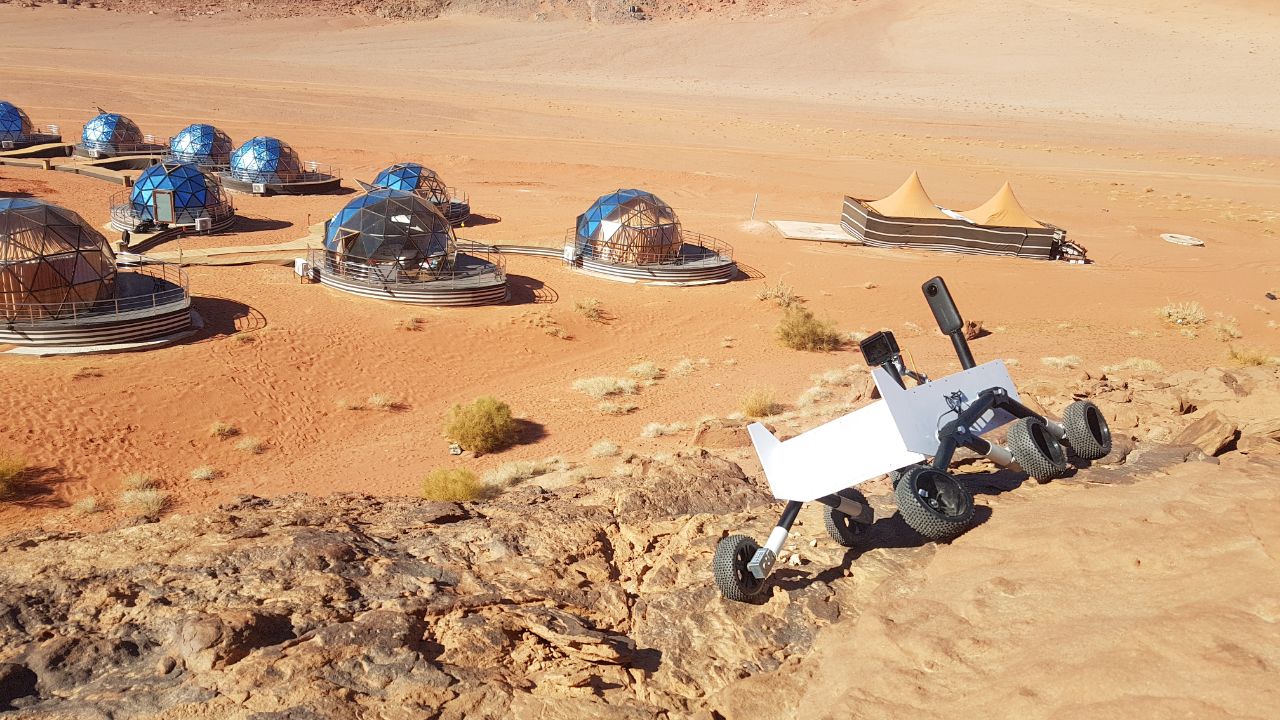“When Matt Damon met Fayiz” is an artistic research project for which a robot with a VR camera was built to investigate the impact of the film industry in the Jordanian desert, Wadi Rum.
In December 2019, we spent several days in Wadi Rum (Arabic: وادي رم Wādī Ramm) also known as the Valley of the Moon, exploring the landscape and the impact of its exposure to the film industry. We interviewed members of Bedouin / Bedu tribes about the adaptation of their traditional livelihood to modern westernized ones. In addition, we experienced for ourselves how the industry of fiction has the power to reshape reality.
This particular desert functioned since the 1960s as a terrain for several famous films, such as Lawrence of Arabia (1962) , The Martian (2015) , Aladdin (2019) . From one side the desert’s golden sand is a perfect setting for films serving on a platter all the clich és of western fantasy: from mysterious belly-dancers to oil sheiks . F rom the other side, the desert’s landscape can be enhanced to give the impression of an extraterrestrial environment. Dry, infertile, dangerous. A number of films about the exploration of foreign planets were shot there, just to mention a few: Red Planet (2000), Last days of Mars (2013), Prometheus (2019) and Dune (2020).
The exposure of Wadi Rum to the film industry has increased tourism in the area. Our robot overcame hills, sand, and heat to investigate the impact it had on the life of the native inhabitants, economy, architecture, and even the landscape changed. Similar to the Curiosity robot that Nasa sent to Mars, our robot collected images and artifacts that the film industry “left behind” in this desert: a series of upright car wheels, blankets to hide plants, plastic rocks, and even a potato.
Our investigation led us to understand that the barren landscape was not barren at all, but actually the perfect surrounding for potato farming. The movie we made takes a look at the ruins fiction has left behind, and tries to unearth the reality that remains.


